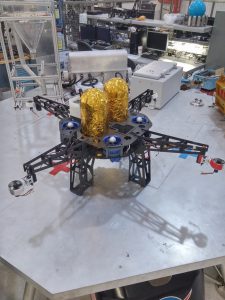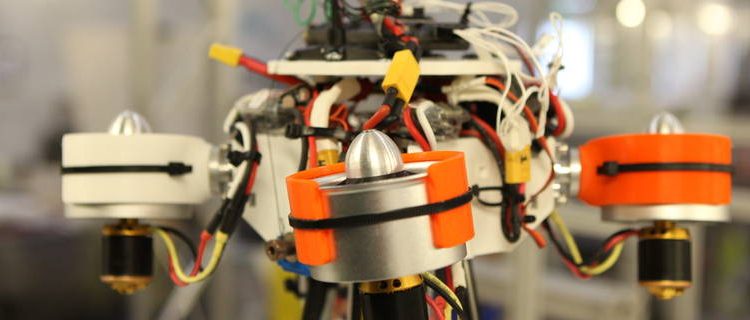NASA is always cooking up some new robots and rockets to take on planetary exploration. Now it wants to send drones up to space to find habitable environments and even get up-close-and-personal with asteroids.
NASA researchers from Swamp Works at Kennedy Space Center are working on the Extreme Access Flyer, a robotic air vehicle that would be able to acquire samples, similar to that of Mars’ Curiosity. The vehicles looks a lot like a hobbyist drone, but it’s built to withstand the thin atmospheric conditions of Mars and other space hurdles it would be up against.
The robot would have a lander as its base and would be able to replenish its power source and propellants on its own before its next flight. Researchers would also like a lander to house multiple drones so that if one is damaged during exploration, the mission isn’t a complete wash.

Ideally, the drone would be able to discover where the resources are on other planets or even an asteroid.
As NASA explains, a land rover like Curiosity would not be able to scale walls that are at a 30-degree angle so a drone would be better able to navigate those hard to reach areas.
Swamp Works engineers want these vehicles to be able to “travel into shaded regions of a crater and pull out small amounts of soil to see whether it holds the water-ice promised by readings from orbiting spacecraft”, according to NASA.
The autonomously navigating drone wouldn’t receive power from traditional fuels either. Instead, they would use resources from the planets and worlds they frequent.
“It would have enough propellant to fly for a number of minutes on Mars or on the moon, hours on an asteroid,” said Mike DuPuis, co-investigator of the Extreme Access Flyer project.
The team has put together a few models in the Swamp Works Lab. The final model for testing will be a large quad-copter with a five-foot wing span that uses ducted fans.
NASA researchers have high hopes for a quadcopter of this kind. Not only would it look for habitable environments and asteroids, but it would also be able to explore lava tubes that may exist on Mars and the moon – some that have been reported to be about 30 feet in diameter – the perfect size for a small drone to fly into.
Watch a prototype Asteroid Prospector Flyer

